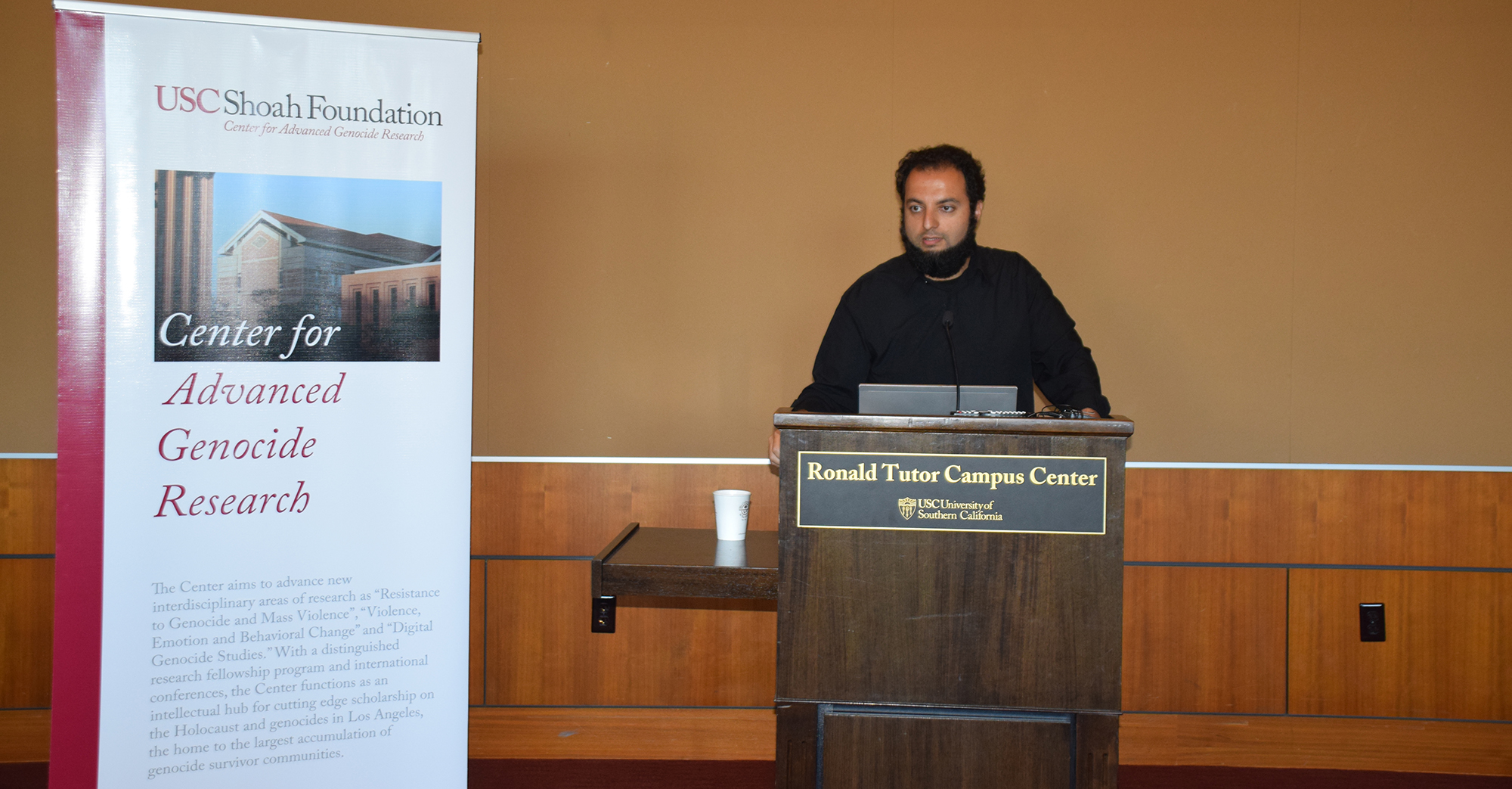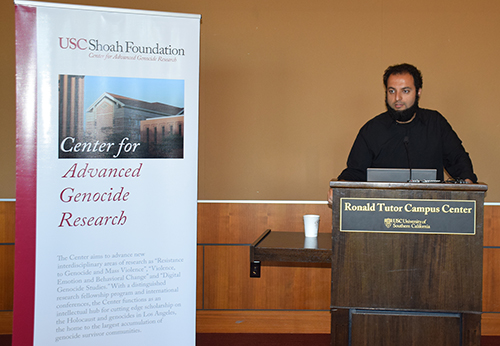Dr. Ugur Üngör Considers Role of Kurds in Armenian Genocide in Lecture at Center for Advanced Genocide Research


Dr. Ugur Üngör began his lecture yesterday at The Forum in USC’s Tutor Campus Center by asking a question that has plagued genocide researchers for generations: How do certain people get involved in genocides as perpetrators, resistors or rescuers, and what leads them to make such choices?
His talk provided possible answers about one group in particular – the Kurdish people of Turkey during the Armenian Genocide. Three specific incidents illustrate the complicated role this minority played in how the genocide was carried out.
Dr. Üngör is Associate Professor of History at Utrecht University in the Netherlands and Research Fellow at the Institute for War, Holocaust, and Genocide Studies in Amsterdam. His research looks at state formation and the sociology of mass violence, particularly in the case of the Armenian Genocide. He was invited to speak at USC by USC Shoah Foundation Center for Advanced Genocide Research.
Kurds are a tribal minority with the most concentrated populations in northeast Turkey. Üngör read an excerpt from an Armenian memoir that shows that the Kurds were difficult for other ethnic groups to understand or categorize, since there were many differences in religion, dialect, tribes, and region.
Perhaps because of this diversity, Kurds responded to the Armenian Genocide in different ways. Üngör’s first example was from Diyarbekir in southeast Turkey, where 97 percent of the region’s Armenians were killed. The Turkish government arrested over one thousand Armenian “elites,” including lawyers, doctors, scholars, bankers and other prosperous people, and then recruited the Kurdish chieftain Omero Perixane, a notorious bandit, to murder them. The incident is known as the “Tigris Massacres,” since he sent these men down the Tigris River to an isolated place to carry out the slaughter.
In Dersim, which is on the Russian border, Üngör said the Kurish tribes were mostly autonomous from the Turkish government. Here, some Kurds actually ran their own smuggling operations, helping Armenians get across the border to safety during the genocide. Üngör said that money, not altruism, was the primary motivation for these kinds of deeds, but nevertheless it saved the lives of many Armenians.
Finally, an interesting phenomenon happened over 50 years after the genocide, in the 1960s and ‘70s, in Shirnak. This area was home to a large Assyrian population and a very powerful Kurdish tribe. Assyrian leader Simon Hana Heydo repelled the Turkish militia and limited the damage in the region. Most Armenians converted to Islam and lived out their lives undercover. But a bishop named Yohanin Teber returned in the 1960s and began baptizing the survivors and their descendants back into Armenians. Suddenly, after decades of no recognized Armenian community, people who had been “dead” since the genocide began coming back to life.
Now, the question is, why would some Kurds aid in the genocide and some help the Armenians to survive? Üngör suggested that financial incentives and tribal allegiances were much stronger than any kind of loyalties Kurds might feel toward the government, their religious identity, or other factors. They were motivated to act in the best interest of their tribe, whether that meant killing Armenians or protecting them. In fact, Armenians were viewed as “property” of the local Kurdish tribe and tribes became very defensive of the Armenian populations they viewed as “theirs.” Kurds would therefore be perfectly willing to harm another tribe’s Armenians while fiercely protecting their own.
They also struggled with the age-old dilemma faced by many in genocidal societies of how far to go to protect a stranger when doing so would put one’s own family at risk. As an example, Üngör told the story of one Kurd who allowed an Armenian (a fellow shoemaker) to hide in his house. But once the government threatened to kill his family if he was found to be hiding Armenians, he shot the Armenian himself.
Üngör ended the talk with a clip from a modern documentary in which a Turkish family talks about its involvement in the genocide. It turns out that the grandfather had assisted with the killing of hundreds of Armenians, and while his son refuses to speak about it on camera, the man’s grandson is very open and explains to the filmmakers what his grandfather did. Üngör pointed out the generational conflict at play and said Turkish families often resist talking about their past because they don’t want to air the family’s dirty laundry. However, younger generations can sometimes be more open than their parents, and might now be willing to go against deeply-ingrained societal taboos that have forbidden people from talking about the genocide for the last century. Finally, the hidden stories of the Armenian Genocide might be told.
Like this article? Get our e-newsletter.
Be the first to learn about new articles and personal stories like the one you've just read.